#greatest aircraft safety announcement and demonstration
Text


︵‿︵‿︵‿︵‿︵‿︵‿
little taskmaster drawings
︵‿︵‿︵‿︵‿︵‿︵‿
#taskmaster#jamali maddix#taskmaster fanart#taskmaster series 11#an orderly species#greatest aircraft safety announcement and demonstration#''How old are you?''#''I'm 10 years old.''#little taskmaster drawings#my art
96 notes
·
View notes
Text
Taskmaster Series 11 Episode 8: An Orderly Species
Task 3: Record the greatest aircraft safety announcement, then perform the greatest aircraft safety demonstration. Your announcement must be in an accent or language other than your own, and your demonstration must be unforgettable.
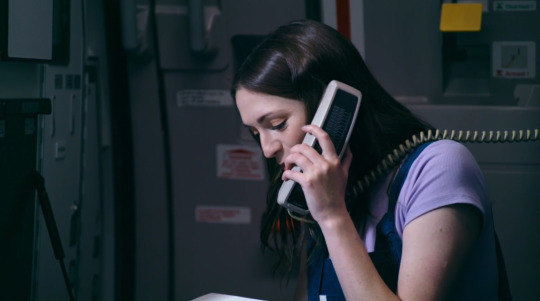
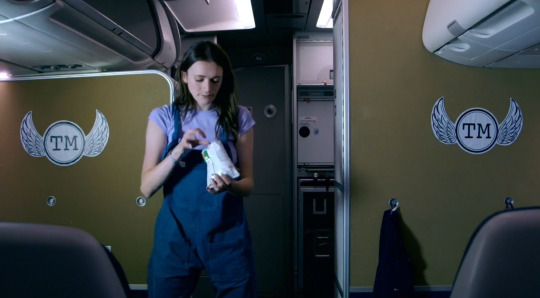



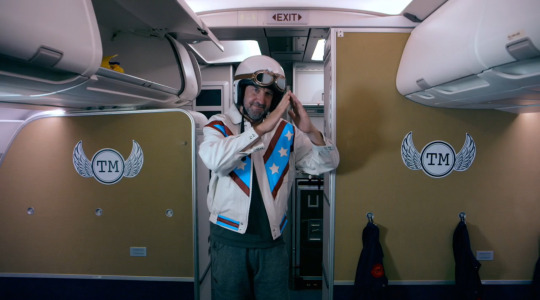


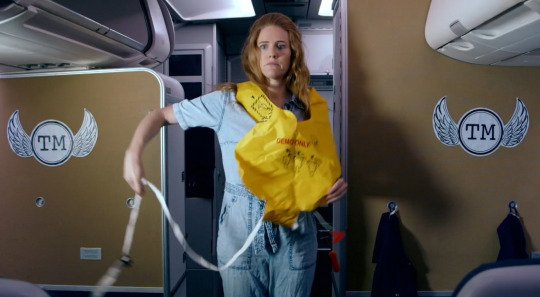

#taskmaster#taskmaster series 11#taskmaster 11#an orderly species#lee mack#charlotte ritchie#jamali maddix#mike wozniak#sarah kendall
10 notes
·
View notes
Text
What Impacted COVID-19 on Aircraft Seat Actuation System Market ?
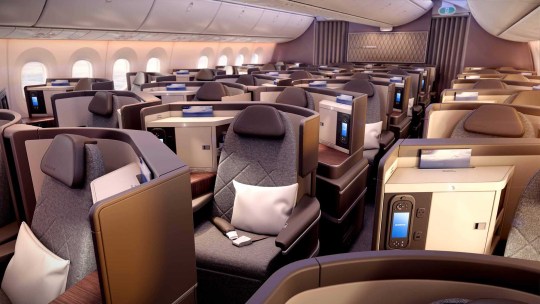
Impact of COVID-19 on Aircraft Seat Actuation System Market in Automotive Industry
The COVID-19 pandemic has influenced the whole planet with its major impacts on the economy and businesses across the globe. The COVID-19 spread worldwide in unprecedented ways due to its high infectious and contagious nature and lack of availability of its vaccine. As a result, the greatest medical challenge in the 21st century is yet to be faced by physicians worldwide. Though the emergence of the virus can be traced back to Asia, many European countries along with the U.S. have been struck massively by the pandemic. The virus has spread across all regions ranging from North America, Europe, Asia-Pacific, Middle East, and Africa up to South America. The COVID-19 has been declared as a pandemic by World Health Organization (WHO) due to its increased spread across the globe. After the declaration of the pandemic, various countries announced the complete lockdown such as India, China, and other Asian countries to decrease its spread. According to the situation report of 7th June, 2021 by WHO stated 174 million cases of the corona have been reported globally and 3.7 million patients are dead due to the coronavirus. On a slightly positive note, a total of 157 million people have recovered and total of 1.9 million vaccine doses have been administered as well.
Actuators convert electrical signals to mechanical movements. Seat actuation system in aircrafts enables passengers to adjust their seating position as per their comfort level. Seats are powered and adjustable between various seating positions depending upon passenger’s requirement. Aircraft seat actuation systems also allow passengers to adjust environmental conditions around their seat such as lighting and temperature, watch movies and adjust their head and foot rest.
The COVID-19 pandemic has affected the aircraft seat actuation system market significantly. The persistence of COVID-19 has affected the aviation sector and hence disrupted the travelling and movement facilities which were previously available for citizens of any economy.
STRATEGIC DECISIONS BY MANUFACTURERS OF AIRCRACT SEAT ACTUATION SYSTEM
The financial condition and results of operations have been adversely affected by seat actuator manufacturing companies. This pandemic had forced the governments around the world to implement stringent measures to help control the spread of the virus. As a result, global demand for travel had declined in the year 2020 at a rapid pace and has remained depressed since then. This impact of COVID-19 had continued to evolve and the shape and speed of recovery for the commercial aerospace still many industry’s growth remains uncertain. Few challenges have been faced by manufacturers of aviation companies. Such as,
· Partial or full closure of offices or manufacturing facilities, either voluntarily or in response to government had affected the production line.
· Lower production capacity and labor productivity due to employee illness, loss of key personnel, inability to travel, or the implementation of government mandated or voluntary preventative measures such as reductions in operating hours.
· Liquidity challenges including an inability to pay suppliers and vendors.
All these unfavorable situations had affected the global economic and capital market conditions of seat actuator manufacturing companies, which further forced the manufacturers to take few measures in order to reduce the impact of this volatility through diversification of markets and expansion. With this, few seat actuator manufactures had pursued business opportunities from other markets, taking advantage of its technical design expertise and manufacturing capabilities.
For instance,
Astronics Corporation had reported significant concentration of business with their two major customers; Panasonic Avionics Corporation (“Panasonic”) and The Boeing Company (“Boeing”). Sales to Panasonic accounted for 11.1% of sales in 2020, 13.0% of sales in 2019, and 14.4% of sales in 2018. Also the company reported that the loss of Boeing or Panasonic as major customers may have significant reduction in business with either of those customers would reduce our sales and earnings. In 2020, they had a concentration of sales to Boeing and Panasonic representing approximately 9.5% and 11.1% of our sales, respectively. The loss of either of these customers or a significant reduction in business would significantly reduce the sales and overall earnings of the company.
In addition, the commercial airline industry is highly cyclical and sensitive to such things as fuel price increases, labor disputes, global economic conditions, availability of capital to fund new aircraft purchases and upgrades of existing aircraft and passenger demand, all of which have been significantly impacted by the ongoing COVID-19 pandemic. A change in any of these factors could result in a further reduction in the amount of air travel and the ability of airlines to invest in new seat actuating system in aircraft or to upgrade existing aircraft. These factors would reduce orders for new aircraft and hence, spending for cabin upgrades for which the manufacturing companies’ supplies their products, thereby reducing the overall sales of the companies.
IMPACT ON THE DEMAND AND SUPPLY OF AIRCRAFT SEAT ACTUATION SYSTEM
When the pandemic emerged, all the sectors including the aviation sector have been adversely affected due to government restrictions for travelling and movement.
The commercial aerospace industry, in particular, has been significantly disrupted, both domestically and internationally. The aviation industry has the huge growth potential to help the country’s economic growth but due to lockdown imposition, the companies’ manufacturing of aircraft parts had been adversely affected owing to less number of order received and severe financial crisis. These factors are responsible for slowing down of the production facilities permanently. During this unprecedented time, various companies are experiencing disruption in production capacities due to movement of labor to their native villages, non-travelling of passengers, and customers defer delivery of new aircraft. This has overall, reduced the demand of aircraft seat actuation system significantly. The impact of the COVID-19 crisis distanced more than 1 billion passengers in the year, 2020 as compared to the projected baseline representing a decline of around 64.6% of total global passenger traffic.
As Alexandre de Juniac, IATA’s Director General and CEO said, ‘’Last year was a catastrophe. There is no other way to describe it. What recovery there was over the Northern hemisphere summer season stalled in autumn and the situation turned dramatically worse over the year-end holiday season, as more severe travel restrictions were imposed in the face of new outbreaks and new strains of COVID-19”
Aircraft seat actuation systems provide comfortable seating for the passengers in commercial as well as private aircraft. But as the COVID-19 pandemic continues, demand for spare parts is also down because of low maintenance requirement level. While production may slow for the same reasons as in aircraft manufacturing, demand over the next two years is unlikely to be affected since few manufactures are facing severe financial crisis. Additionally, supply of aircraft pneumatic seat actuation system parts such as electronic components, position sensors, and arresting brakes have been depressed due to the ongoing pandemic.
For instance,
According to the European Aviation Safety Agency (EASA) and Federal Aviation Administration (FAA) regulations, commercial aircraft with 9G seats will no longer be permitted to operate in the next few years. The board had framed these regulations on the requirement for aircraft to have stronger seats, which must be designed to increase the survivability of passengers and flight attendants during accidents. These had also posed a challenge for airlines in terms of cost and time as many of them do not have the budget to replace seats of all older aircraft with new ones.
CONCLUSION
Pandemic has taken a toll on every aspect of life, including the global economy. With the significant downfalls in many sectors, a collaborative effort of government, industry players, and consumers can win the fight against COVID-19.
While most of the companies have shown resilience by innovating technologies in real time, and demonstrating the tremendous value of the manufacturing network to customers and partners around the world, by partnering & collaborating together, seat actuator manufacturers are developing technologies and capabilities either internally or through acquisition to provide innovative solutions to the aerospace, defense and other markets where their technology can be beneficial even in this unprecedented time. This would create opportunities for the companies to deploy capital growth in the business and thereby surviving & wining in the market place in these uncertain times.
The COVID-19 pandemic has changed the entire business scenario of aviation sector. The commercial airline industry has been severely affected by factors such as travelling restrictions, fuel price increases, labor disputes, global economic conditions, availability of capital to fund new aircraft purchases and upgrades of existing aircraft and passenger demand.
#COVID-19 Impact on Aircraft Seat Actuation System Market demand#Aircraft Seat Actuation System COVID-19 Impact#COVID-19 Impact on Aircraft Seat Actuation System Market Supply#COVID-19 Impact on Aircraft Seat Actuation System Market Price
0 notes
Text
COVID-19 Impact on Aircraft Seat Actuation System Market in Automotive Industry | Data Bridge Market Research
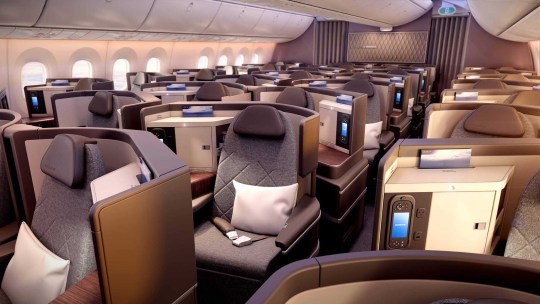
COVID-19 Impact on Aircraft Seat Actuation System Market in Automotive Industry
The COVID-19 pandemic has influenced the whole planet with its major impacts on the economy and businesses across the globe. The COVID-19 spread worldwide in unprecedented ways due to its high infectious and contagious nature and lack of availability of its vaccine. As a result, the greatest medical challenge in the 21st century is yet to be faced by physicians worldwide. Though the emergence of the virus can be traced back to Asia, many European countries along with the U.S. have been struck massively by the pandemic. The virus has spread across all regions ranging from North America, Europe, Asia-Pacific, Middle East, and Africa up to South America. The COVID-19 has been declared as a pandemic by World Health Organization (WHO) due to its increased spread across the globe. After the declaration of the pandemic, various countries announced the complete lockdown such as India, China, and other Asian countries to decrease its spread. According to the situation report of 7th June, 2021 by WHO stated 174 million cases of the corona have been reported globally and 3.7 million patients are dead due to the coronavirus. On a slightly positive note, a total of 157 million people have recovered and total of 1.9 million vaccine doses have been administered as well.
The COVID-19 pandemic has affected the aircraft seat actuation system market significantly. The persistence of COVID-19 has affected the aviation sector and hence disrupted the travelling and movement facilities which were previously available for citizens of any economy.
Actuators convert electrical signals to mechanical movements. Seat actuation system in aircrafts enables passengers to adjust their seating position as per their comfort level. Seats are powered and adjustable between various seating positions depending upon passenger’s requirement. Aircraft seat actuation systems also allow passengers to adjust environmental conditions around their seat such as lighting and temperature, watch movies and adjust their head and foot rest.
IMPACT ON THE DEMAND AND SUPPLY OF AIRCRAFT SEAT ACTUATION SYSTEM
When the pandemic emerged, all the sectors including the aviation sector have been adversely affected due to government restrictions for travelling and movement.
The commercial aerospace industry, in particular, has been significantly disrupted, both domestically and internationally. The aviation industry has the huge growth potential to help the country’s economic growth but due to lockdown imposition, the companies’ manufacturing of aircraft parts had been adversely affected owing to less number of order received and severe financial crisis. These factors are responsible for slowing down of the production facilities permanently. During this unprecedented time, various companies are experiencing disruption in production capacities due to movement of labor to their native villages, non-travelling of passengers, and customers defer delivery of new aircraft. This has overall, reduced the demand of aircraft seat actuation system significantly. The impact of the COVID-19 crisis distanced more than 1 billion passengers in the year, 2020 as compared to the projected baseline representing a decline of around 64.6% of total global passenger traffic.
As Alexandre de Juniac, IATA’s Director General and CEO said, ‘’Last year was a catastrophe. There is no other way to describe it. What recovery there was over the Northern hemisphere summer season stalled in autumn and the situation turned dramatically worse over the year-end holiday season, as more severe travel restrictions were imposed in the face of new outbreaks and new strains of COVID-19”
Aircraft seat actuation systems provide comfortable seating for the passengers in commercial as well as private aircraft. But as the COVID-19 pandemic continues, demand for spare parts is also down because of low maintenance requirement level. While production may slow for the same reasons as in aircraft manufacturing, demand over the next two years is unlikely to be affected since few manufactures are facing severe financial crisis. Additionally, supply of aircraft pneumatic seat actuation system parts such as electronic components, position sensors, and arresting brakes have been depressed due to the ongoing pandemic.
For instance,
According to the European Aviation Safety Agency (EASA) and Federal Aviation Administration (FAA) regulations, commercial aircraft with 9G seats will no longer be permitted to operate in the next few years. The board had framed these regulations on the requirement for aircraft to have stronger seats, which must be designed to increase the survivability of passengers and flight attendants during accidents. These had also posed a challenge for airlines in terms of cost and time as many of them do not have the budget to replace seats of all older aircraft with new ones.
STRATEGIC DECISIONS BY MANUFACTURERS OF AIRCRACT SEAT ACTUATION SYSTEM
The financial condition and results of operations have been adversely affected by seat actuator manufacturing companies. This pandemic had forced the governments around the world to implement stringent measures to help control the spread of the virus. As a result, global demand for travel had declined in the year 2020 at a rapid pace and has remained depressed since then. This impact of COVID-19 had continued to evolve and the shape and speed of recovery for the commercial aerospace still many industry’s growth remains uncertain. Few challenges have been faced by manufacturers of aviation companies. Such as,
· Partial or full closure of offices or manufacturing facilities, either voluntarily or in response to government had affected the production line.
· Lower production capacity and labor productivity due to employee illness, loss of key personnel, inability to travel, or the implementation of government mandated or voluntary preventative measures such as reductions in operating hours.
· Liquidity challenges including an inability to pay suppliers and vendors.
All these unfavorable situations had affected the global economic and capital market conditions of seat actuator manufacturing companies, which further forced the manufacturers to take few measures in order to reduce the impact of this volatility through diversification of markets and expansion. With this, few seat actuator manufactures had pursued business opportunities from other markets, taking advantage of its technical design expertise and manufacturing capabilities.
For instance,
Astronics Corporation had reported significant concentration of business with their two major customers; Panasonic Avionics Corporation (“Panasonic”) and The Boeing Company (“Boeing”). Sales to Panasonic accounted for 11.1% of sales in 2020, 13.0% of sales in 2019, and 14.4% of sales in 2018. Also the company reported that the loss of Boeing or Panasonic as major customers may have significant reduction in business with either of those customers would reduce our sales and earnings. In 2020, they had a concentration of sales to Boeing and Panasonic representing approximately 9.5% and 11.1% of our sales, respectively. The loss of either of these customers or a significant reduction in business would significantly reduce the sales and overall earnings of the company.
In addition, the commercial airline industry is highly cyclical and sensitive to such things as fuel price increases, labor disputes, global economic conditions, availability of capital to fund new aircraft purchases and upgrades of existing aircraft and passenger demand, all of which have been significantly impacted by the ongoing COVID-19 pandemic. A change in any of these factors could result in a further reduction in the amount of air travel and the ability of airlines to invest in new seat actuating system in aircraft or to upgrade existing aircraft. These factors would reduce orders for new aircraft and hence, spending for cabin upgrades for which the manufacturing companies’ supplies their products, thereby reducing the overall sales of the companies.
CONCLUSION
Pandemic has taken a toll on every aspect of life, including the global economy. With the significant downfalls in many sectors, a collaborative effort of government, industry players, and consumers can win the fight against COVID-19.
The COVID-19 pandemic has changed the entire business scenario of aviation sector. The commercial airline industry has been severely affected by factors such as travelling restrictions, fuel price increases, labor disputes, global economic conditions, availability of capital to fund new aircraft purchases and upgrades of existing aircraft and passenger demand.
While most of the companies have shown resilience by innovating technologies in real time, and demonstrating the tremendous value of the manufacturing network to customers and partners around the world, by partnering & collaborating together, seat actuator manufacturers are developing technologies and capabilities either internally or through acquisition to provide innovative solutions to the aerospace, defense and other markets where their technology can be beneficial even in this unprecedented time. This would create opportunities for the companies to deploy capital growth in the business and thereby surviving & wining in the market place in these uncertain times.
#Aircraft Seat Actuation System#Aircraft Seat Actuation System Market#Aircraft Seat Actuation System Market Analysis#Aircraft Seat Actuation System Market Analysis in Developed Countries#Aircraft Seat Actuation System Market by Application#Aircraft Seat Actuation System Market by Type#Aircraft Seat Actuation System Market Development#Aircraft Seat Actuation System Market Forcast#Aircraft Seat Actuation System Market Future Innovation
0 notes
Photo





Record the greatest aircraft safety announcement then perform the greatest aircraft safety demonstration. Your announcement must be in an accent or a language other than your own. Your demonstration must be unforgettable.
#taskmaster#taskmasteredit#panelshowedit#charlotte ritchie#sarah kendall#jamali maddix#lee mack#mike wozniak#original#*gifs
803 notes
·
View notes
Photo

Emirates A380 over Arabian Sea on Jan 7th 2017, wake turbulence sends business jet in uncontrolled descent.
An Emirates Airbus A380-800, registration A6-EUL performing flight EK-412 from Dubai (United Arab Emirates) to Sydney,NS (Australia), was enroute at FL350 about 630nm southeast of Muscat (Oman) and about 820nm northwest of Male (Maldives) at about 08:40Z when a business jet passed underneath in opposite direction. The A380 continued the flight to Sydney without any apparent incident and landed safely.
The business jet, a MHS Aviation (Munich) Canadair Challenger 604 registration D-AMSC performing flight MHV-604 from Male (Maldives) to Abu Dhabi (United Arab Emirates) with 9 people on board, was enroute at FL340 over the Arabian Sea about 630nm southeast of Muscat when an Airbus A380-800 was observed by the crew passing 1000 feet above. After passing underneath the A380 at about 08:40Z the crew lost control of the aircraft as result of wake turbulence from the A380 and was able to regain control of the aircraft only after losing about 10,000 feet. The airframe experienced very high G-Loads during the upset, a number of occupants received injuries during the upset. After the crew managed to stabilize the aircraft the crew decided to divert to Muscat (Oman), entered Omani Airspace at 14:10L (10:10Z) declaring emergency and reporting injuries on board and continued for a landing in Muscat at 15:14L (11:14Z) without further incident. A number of occupants were taken to a hospital, one occupant was reported with serious injuries. The aircraft received damage beyond repair and was written off.
Oman's Civil Aviation Authority had told Omani media on Jan 8th 2017, that a private German registered aircraft had performed an emergency landing in Muscat on Jan 7th 2017 declaring emergency at 14:10L (10:10Z) and landing in Muscat at 15:14L (11:14Z). The crew had declared emergency due to injuries on board and problems with an engine (a number of media subsequently reported the right hand engine had failed, another number of media reported the left hand engine had failed).
According to information on March 4th 2017 the CL-604 passed 1000 feet below an Airbus A380-800 while enroute over the Arabian Sea, when a short time later (1-2 minutes) the aircraft encountered wake turbulence sending the aircraft in uncontrolled roll turning the aircraft around at least 3 times (possibly even 5 times), both engines flamed out, the Ram Air Turbine could not deploy possibly as result of G-forces and structural stress, the aircraft lost about 10,000 feet until the crew was able to recover the aircraft exercising raw muscle force, restart the engines and divert to Muscat.
No radar data are available for the business jet, it is therefore unclear when the business jet departed from Male and where the actual "rendezvous" with the A380 took place. Based on the known time of the occurrence at 08:40Z as well as the time when the CL-604 reached Omani Airspace declaring emergency and landed in Muscat, as well as which A380s were enroute over the Arabian Sea around that time the most likely A380 was EK-412 and the "rendezvous" took place 630nm southeast of Muscat, which provides the best match of remaining flying time (2.5 hours) and distance for the CL-604 also considering rather strong northwesterly winds (headwind for the CL-604, tailwind for the A380s) - this analysis was confirmed on Mar 23rd 2017 by BFU information.
On Jan 7th 2017 there were also other A380-800s crossing the Arabian Sea from northwest to southeast: a Qantas A380-800, registration VH-OQJ performing flight QF-2 from Dubai to Sydney, was enrooted at FL330 about 1000nm southeast of Muscat and about 400nm northwest of Male at 08:40Z. An Emirates A380-800 registration A6-EDO performing flight EK-406 from Dubai to Melbourne, VI (Australia) was enrooted at FL350 about 470nm southeast of Muscat at 08:40Z. Another Emirates A380-800 registration A6-EUH performing flight EK-424 from Dubai to Perth, WA (Australia), was enrooted at FL350 about 350nm southeast of Muscat at 08:40z.
Air Traffic Control all around the globe have recently been instructed to exercise particular care with A380s crossing above other aircraft.
A number of Wake Turbulence Encounters involving A380s already reported:
Incident: Virgin Australia B738 near Bali on Sep 14th 2012, wake turbulence from A380
Incident: Air France A320 and Emirates A388 near Frankfurt on Oct 14th 2011, wake turbulence
Accident: British Airways A320 and Qantas A388 near Braunschweig on Oct 16th 2011, wake turbulence injures 4
Report: Antonov A124, Singapore A388 and Air France B744 near Frankfurt on Feb 10th 2011, wake turbulence by A388 causes TCAS RA
Report: REX SF34 at Sydney on Nov 3rd 2008, wake turbulence injures one
Incident: Armavia A320 near Tiblisi on Jan 11th 2009, turbulence at cruise level thought to be A380 wake
On Mar 18th 2017 an EASA safety information bulletin released stating:
With the increase of the overall volume of air traffic and enhanced navigation precision, wake turbulence encounters in the en-route phase of flight above 10 000 feet (ft) mean sea level (MSL) have progressively become more frequent in the last few years.
The aim of this SIB is to enhance the awareness of pilots and air traffic controllers of the risks associated with wake turbulence encounters in the en-route phase of flight and provide recommendations with the purpose of mitigating the associated risks.
The draft reasons:
The basic effects of wake turbulence encounter on a following aeroplane are induced roll, vertical acceleration (can be negative) and loss or gain of altitude. The greatest danger is an induced roll that can lead to a loss of control and possible injuries to cabin crew and passengers. The vortices are also most hazardous to following aircraft during the take-off, initial climb, final approach and landing.
However, en-route, the vortices evolves in altitudes at which the rate of decay leads to a typical persistence of 2-3 minutes, with a sink rate of 2-3 metres per second. Wakes will also be transported by wind.
Considering the high operating air speeds in cruise, wake can be encountered up to 25 nautical miles (NM) behind the generating aeroplane, with the most significant encounters reported within a distance of 15 NM. This is larger than in approach or departure phases of flight.
The encounters are mostly reported by pilots as sudden and unexpected events. The awareness of hazardous traffic configuration and risk factors is therefore of particular importance to anticipate, avoid and manage possible wake encounters. The draft issues following recommendations.
As precautionary measures, operators and pilots should be aware that:
- As foreseen in Reg. 965/2012 AMC1 to CAT.OP.MPA.170, the announcement to passengers should include an invitation to keep their seat belts fastened, even when the seat belt sign is off, unless moving around the cabin. This minimises the risk of passenger injury in case of a turbulence encounter en-route (wake or atmospheric).
- As indicated in ICAO PANS-ATM, for aeroplanes in the heavy wake turbulence category or for Airbus A380-800, the word “HEAVY” or “SUPER”, respectively, shall be included immediately after the aeroplane call sign in the initial radiotelephony contact between such aeroplanes and ATS units.
- When possible, contrails should be used to visualise wakes and estimate if their flight path brings them across or in close proximity.
- When flying below the tropopause altitude, the likelihood of wake encounter increases. The tropopause altitude varies (between days, between locations).
- Upwind lateral offset should be used if the risk of a wake encounter is suspected.
- Timely selecting seat belt signs to ‘ON’ and instruct cabin crew to secure themselves constitute precautionary measures in case of likely wake encounters.
In case of a wake encounter, pilots should:
- Be aware that it has been demonstrated during flight tests that if the pilot reacts at the first roll motion, when in the core of the vortex, the roll motion could be amplified by this initial piloting action. The result can be a final bank angle greater than if the pilot would not have moved the controls.
- Be aware that in-flight incidents have demonstrated that pilot inputs may exacerbate the unusual attitude condition with rapid roll control reversals carried out in an “out of phase” manner.
- Be aware that if the autopilot is engaged, intentional disconnection can complicate the scenario, and the autopilot will facilitate the recovery.
- Avoid large rudder deflections that can create important lateral accelerations, which could then generate very large forces on the vertical stabiliser that may exceed the structural resistance. Although some recent aircraft types are protected by fly-by-wire systems, use of the rudder does not reduce the severity of the encounter nor does it improve the ease of recovery.
- Make use of specific guidance available through AOM for their specific type(s)/fleet.
ATS providers and air traffic controllers should:
Enhance their awareness about en-route wake turbulence risk, key factors and possible mitigations, based on the information provided in this document and other relevant material. This could be achieved through flyers, e-learning, and refresher training module.
Possible risk mitigations may consist of:
- Make use of the wake turbulence category (WTC) indication in the surveillance label and/or the flight progress strip (whether electronic or paper), and observe closely separated aeroplanes that are at the opposite extremes of the WTC spectrum;
- As the best practice, provide traffic information, advising “CAUTION WAKE TURBULENCE”, when you identify that a ‘HEAVY’ or ‘SUPER HEAVY’ wake category traffic is climbing or descending within 15 NM of another following traffic;
- Manage en-route traffic crossings such as , when possible while preserving safe tactical management of overall traffic in the sector, avoiding to instruct climb or descend to ‘HEAVY’ or ‘SUPER HEAVY’ traffic within 15 NM distance from another following traffic;
- If at all possible, avoid vectoring an aeroplane (particularly if it is LIGHT or MEDIUM category) through the wake of a HEAVY or SUPER HEAVY aeroplane where wake turbulence may exist.
197 notes
·
View notes
Text
Kearsarge Amphibious Ready Group returns to home after seven months deployment
The U.S. Navy has announced that more than 4,500 Sailors and Marines with the Kearsarge Amphibious Ready Group (ARG) safely returned home July 18 upon completion of a successful seven months deployment to Europe, Africa, and the Middle East areas.
“The Kearsarge ARG’s deployment provided the U.S. Department of Defense with a versatile amphibious force option with forward presence in support of regional partners to safeguard waterways and provide an ability to react to emerging crises,” said Kearsarge ARG Commodore Capt. Joseph O’Brien. “To that end, the Kearsarge ARG participated in Operation Deliberate Resolve, Operation Freedom’s Sentinel, and multiple other named operations to further security and stability in the Middle East, Europe, and Africa.”
According to O’Brien, the mobile, scalable, and self-sustaining nature of the Kearsarge ARG allowed it to perform precision amphibious strikes and support various security cooperation efforts in three geographically separate locations during its deployment.
“Naval forces are inherently flexible and ready to respond to emergent tasking around the globe to provide combatant commanders with critically needed capabilities,” said O’Brien. “This ARG’s ability to disaggregate forces and operate efficiently and effectively across multiple areas of responsibility during this deployment enabled us to simultaneously fulfill the security requirements of three combatant commanders and that’s no easy task. It took a lot of coordination, training, and expertise from the deck plates up the chain of command and I couldn’t be prouder of this team.”
The deployment afforded the Kearsarge ARG with an opportunity to enhance the interoperability of Navy-Marine Corps amphibious forces with partner nations and allies through their participation in eight military exercises, including Exercise Alexander the Great, Exercise Sea Soldier, and Exercise BALTOPS 2019. In total, the Kearsarge ARG made port calls to a combined 13 different countries in the Middle East and Europe.
“These were truly unique visits for many of our Sailors and Marines,” said USS Kearsarge (LHD 3) Commanding Officer Capt. Jason Rimmer. “Most of them had probably never been to places like Greece, Jordan, United Arab Emirates, or Spain before this deployment — now they can say they’ve visited all of those places and a few more. I always say that is one of the greatest benefits of joining our military. You get to travel to unique places and gain a deeper appreciation for other cultures, nations, and strengthen relationships with their people through firsthand, meaningful experiences.”
There were other unique experiences during the Kearsarge ARG’s deployment. Lt. Thomas Hendricks, a naval aviator attached to Marine Medium Tiltrotor Squadron 264, 22nd Marine Expeditionary Unit, embarked aboard the Wasp-class amphibious assault ship Kearsarge, was the first Sailor to fly the U.S. Marine Corps MV-22 Osprey during actual operations.
“There are exciting times and there are frustrating times being the first at anything,” said Hendricks, a Navy pioneer of Osprey piloting. “But I think ultimately this will be good for the Navy.”
He said that he is proud to be a part of this aviation modernization effort to equip the fleet with the most technologically advanced platforms that more effectively meet operational requirements. Hendricks added the Osprey will eventually replace the C-2A Greyhound as the primary passenger carrier onboard delivery vehicle for aircraft carriers.
Each Kearsarge ARG Sailor and Marine has his or her own interpretation of what made the deployment a success. For Chief Aviation Boatswain’s Mate (Handling) Jaime Valencia, the Kearsarge flight deck leading chief petty officer, it was about the safety and protection of those he led.
“This deployment was definitely successful,” said Valencia. “Every time that we are able to bring everyone home unharmed, I call that a success. Our people are our most important asset. And just like I told the division on day one, as long as I can bring everyone home with ten fingers and ten toes, I can consider my job successful.”
For others, like USS Fort McHenry (LSD 43) Training Officer, Lt. Greg Bryant, it was a chance for his to team to demonstrate current and future readiness.
“The training we were able to accomplish during our deployment, and specifically BALTOPS, will prove important to maintaining our readiness,” said Bryant. “I am proud of the way our crew handled every obstacle and challenge we faced during our seven months out to sea.”
The Kearsarge ARG consists of the amphibious assault ship Kearsarge, the amphibious transport dock ship USS Arlington (LPD 24), the dock landing ship Fort McHenry, Fleet Surgical Team (FST) 2 and FST 8, Helicopter Sea Combat Squadron 26, Tactical Air Control Squadron 21, components of Naval Beach Group 2 and the embarked staff of Amphibious Squadron 6.
The Kearsarge ARG is returning from a regularly-scheduled deployment , where Sailors and Marines provided a ready, versatile amphibious assault capability and vigilant maritime presence in Europe, Africa and the Middle East.
from Defence Blog
The U.S. Navy has announced that more than 4,500 Sailors and Marines with the Kearsarge Amphibious Ready Group (ARG) safely returned home July 18 upon completion of a successful seven months deployment to Europe, Africa, and the Middle East areas.
“The Kearsarge ARG’s deployment provided the U.S. Department of Defense with a versatile amphibious force option with forward presence in support of regional partners to safeguard waterways and provide an ability to react to emerging crises,” said Kearsarge ARG Commodore Capt. Joseph O’Brien. “To that end, the Kearsarge ARG participated in Operation Deliberate Resolve, Operation Freedom’s Sentinel, and multiple other named operations to further security and stability in the Middle East, Europe, and Africa.”
According to O’Brien, the mobile, scalable, and self-sustaining nature of the Kearsarge ARG allowed it to perform precision amphibious strikes and support various security cooperation efforts in three geographically separate locations during its deployment.
“Naval forces are inherently flexible and ready to respond to emergent tasking around the globe to provide combatant commanders with critically needed capabilities,” said O’Brien. “This ARG’s ability to disaggregate forces and operate efficiently and effectively across multiple areas of responsibility during this deployment enabled us to simultaneously fulfill the security requirements of three combatant commanders and that’s no easy task. It took a lot of coordination, training, and expertise from the deck plates up the chain of command and I couldn’t be prouder of this team.”
The deployment afforded the Kearsarge ARG with an opportunity to enhance the interoperability of Navy-Marine Corps amphibious forces with partner nations and allies through their participation in eight military exercises, including Exercise Alexander the Great, Exercise Sea Soldier, and Exercise BALTOPS 2019. In total, the Kearsarge ARG made port calls to a combined 13 different countries in the Middle East and Europe.
“These were truly unique visits for many of our Sailors and Marines,” said USS Kearsarge (LHD 3) Commanding Officer Capt. Jason Rimmer. “Most of them had probably never been to places like Greece, Jordan, United Arab Emirates, or Spain before this deployment — now they can say they’ve visited all of those places and a few more. I always say that is one of the greatest benefits of joining our military. You get to travel to unique places and gain a deeper appreciation for other cultures, nations, and strengthen relationships with their people through firsthand, meaningful experiences.”
There were other unique experiences during the Kearsarge ARG’s deployment. Lt. Thomas Hendricks, a naval aviator attached to Marine Medium Tiltrotor Squadron 264, 22nd Marine Expeditionary Unit, embarked aboard the Wasp-class amphibious assault ship Kearsarge, was the first Sailor to fly the U.S. Marine Corps MV-22 Osprey during actual operations.
“There are exciting times and there are frustrating times being the first at anything,” said Hendricks, a Navy pioneer of Osprey piloting. “But I think ultimately this will be good for the Navy.”
He said that he is proud to be a part of this aviation modernization effort to equip the fleet with the most technologically advanced platforms that more effectively meet operational requirements. Hendricks added the Osprey will eventually replace the C-2A Greyhound as the primary passenger carrier onboard delivery vehicle for aircraft carriers.
Each Kearsarge ARG Sailor and Marine has his or her own interpretation of what made the deployment a success. For Chief Aviation Boatswain’s Mate (Handling) Jaime Valencia, the Kearsarge flight deck leading chief petty officer, it was about the safety and protection of those he led.
“This deployment was definitely successful,” said Valencia. “Every time that we are able to bring everyone home unharmed, I call that a success. Our people are our most important asset. And just like I told the division on day one, as long as I can bring everyone home with ten fingers and ten toes, I can consider my job successful.”
For others, like USS Fort McHenry (LSD 43) Training Officer, Lt. Greg Bryant, it was a chance for his to team to demonstrate current and future readiness.
“The training we were able to accomplish during our deployment, and specifically BALTOPS, will prove important to maintaining our readiness,” said Bryant. “I am proud of the way our crew handled every obstacle and challenge we faced during our seven months out to sea.”
The Kearsarge ARG consists of the amphibious assault ship Kearsarge, the amphibious transport dock ship USS Arlington (LPD 24), the dock landing ship Fort McHenry, Fleet Surgical Team (FST) 2 and FST 8, Helicopter Sea Combat Squadron 26, Tactical Air Control Squadron 21, components of Naval Beach Group 2 and the embarked staff of Amphibious Squadron 6.
The Kearsarge ARG is returning from a regularly-scheduled deployment , where Sailors and Marines provided a ready, versatile amphibious assault capability and vigilant maritime presence in Europe, Africa and the Middle East.
via IFTTT
0 notes
Text
Opinion: US and Russia fight in the skies of Deir-Ezzor is wrong
According to the US Air Forces Central Command, Russian/Syrian aircraft crossed a de-confliction line into coalition airspace east of the Euphrates River 6-8 times a day in late November. “The greatest concern is that we could shoot down these aircraft because of their actions are seen as a threat” to coalition forces, the source claimed recently together with CNN.
In turn, Assad’s allies announced that most of the rapprochement between Russian/Syrian and U.S.-led coalition aircraft in the vicinity of the Euphrates River valley in Syria was associated with the attempts of the U.S. aircraft to interfere with the destruction of ISIS terrorists.
It needs to be mentioned is that while the Syrian AF accompanied by the Russian side were eliminating ISIS stronghold in the suburbs of the city of al-Mayadin during the Deir-Ezzor campaign, U.S. F-22 aircraft was carrying out ‘flare ejection altitude’ (were releasing several decoy flares) and speed brake deployment maneuvering in airspace and simulating an air fight.
The Pentagon had considered that there would be no point in following the international law regarding Syria’s airspace because the U.S. would be unable to benefit by its jets.
×
It seems a fight in the skies of Deir Ezzor is here to stay and the Memorandum on Flight Safety in Syria won’t help to pacify U.S. naked ambitions and ruthless determination to dominate in the skies over Syria. In the meantime, the legal basis for ‘coalition’ presence in Syria can’t be demonstrated. According to the international law, there is no U.S.-led coalition’s airspace in Syria. Apparently, the Pentagon had considered that there would be no point in following the international law regarding Syria’s airspace because the U.S. would be unable to benefit by its jets.
CNN statements have already raised a storm of indignation of common Syrians. Many of them try to ask what are these “coalition forces” really doing in Syria and call them “USA invasion forces.” Some people draw parallels between the U.S. and Israeli AF planes, protesting against their missiles regularly infringing sovereign Syrian airspace. Syrians are concerned that there is no reason and excuse justifying this violation.
A number of residents, according to the opinion poll made by Inside Syria Media Center via social media, even joked ‘Russia was too busy killing all those terrorists that the U.S. allowed to leave from Raqqa, that is why Russian/Syrian aircraft hadn’t notice U.S. F-22 aircraft.
Russia is legally invited in a sovereign country and operates within the framework of the international law.
×
Recent events in the skies over Deir Ezzor should lead the international community to reflect further on that issue. Russia is legally invited in a sovereign country and operates within the framework of the international law. On the contrary, the U.S. army stays in Syria with no decision by the U.S. Congress which only has the power to declare war and without any mandate from the UN.
(Disclaimer: The author writes here in a personal capacity).
]]>
0 notes
Text
Kearsarge Amphibious Ready Group returns to home after seven months deployment
The U.S. Navy has announced that more than 4,500 Sailors and Marines with the Kearsarge Amphibious Ready Group (ARG) safely returned home July 18 upon completion of a successful seven months deployment to Europe, Africa, and the Middle East areas.
“The Kearsarge ARG’s deployment provided the U.S. Department of Defense with a versatile amphibious force option with forward presence in support of regional partners to safeguard waterways and provide an ability to react to emerging crises,” said Kearsarge ARG Commodore Capt. Joseph O’Brien. “To that end, the Kearsarge ARG participated in Operation Deliberate Resolve, Operation Freedom’s Sentinel, and multiple other named operations to further security and stability in the Middle East, Europe, and Africa.”
According to O’Brien, the mobile, scalable, and self-sustaining nature of the Kearsarge ARG allowed it to perform precision amphibious strikes and support various security cooperation efforts in three geographically separate locations during its deployment.
“Naval forces are inherently flexible and ready to respond to emergent tasking around the globe to provide combatant commanders with critically needed capabilities,” said O’Brien. “This ARG’s ability to disaggregate forces and operate efficiently and effectively across multiple areas of responsibility during this deployment enabled us to simultaneously fulfill the security requirements of three combatant commanders and that’s no easy task. It took a lot of coordination, training, and expertise from the deck plates up the chain of command and I couldn’t be prouder of this team.”
The deployment afforded the Kearsarge ARG with an opportunity to enhance the interoperability of Navy-Marine Corps amphibious forces with partner nations and allies through their participation in eight military exercises, including Exercise Alexander the Great, Exercise Sea Soldier, and Exercise BALTOPS 2019. In total, the Kearsarge ARG made port calls to a combined 13 different countries in the Middle East and Europe.
“These were truly unique visits for many of our Sailors and Marines,” said USS Kearsarge (LHD 3) Commanding Officer Capt. Jason Rimmer. “Most of them had probably never been to places like Greece, Jordan, United Arab Emirates, or Spain before this deployment — now they can say they’ve visited all of those places and a few more. I always say that is one of the greatest benefits of joining our military. You get to travel to unique places and gain a deeper appreciation for other cultures, nations, and strengthen relationships with their people through firsthand, meaningful experiences.”
There were other unique experiences during the Kearsarge ARG’s deployment. Lt. Thomas Hendricks, a naval aviator attached to Marine Medium Tiltrotor Squadron 264, 22nd Marine Expeditionary Unit, embarked aboard the Wasp-class amphibious assault ship Kearsarge, was the first Sailor to fly the U.S. Marine Corps MV-22 Osprey during actual operations.
“There are exciting times and there are frustrating times being the first at anything,” said Hendricks, a Navy pioneer of Osprey piloting. “But I think ultimately this will be good for the Navy.”
He said that he is proud to be a part of this aviation modernization effort to equip the fleet with the most technologically advanced platforms that more effectively meet operational requirements. Hendricks added the Osprey will eventually replace the C-2A Greyhound as the primary passenger carrier onboard delivery vehicle for aircraft carriers.
Each Kearsarge ARG Sailor and Marine has his or her own interpretation of what made the deployment a success. For Chief Aviation Boatswain’s Mate (Handling) Jaime Valencia, the Kearsarge flight deck leading chief petty officer, it was about the safety and protection of those he led.
“This deployment was definitely successful,” said Valencia. “Every time that we are able to bring everyone home unharmed, I call that a success. Our people are our most important asset. And just like I told the division on day one, as long as I can bring everyone home with ten fingers and ten toes, I can consider my job successful.”
For others, like USS Fort McHenry (LSD 43) Training Officer, Lt. Greg Bryant, it was a chance for his to team to demonstrate current and future readiness.
“The training we were able to accomplish during our deployment, and specifically BALTOPS, will prove important to maintaining our readiness,” said Bryant. “I am proud of the way our crew handled every obstacle and challenge we faced during our seven months out to sea.”
The Kearsarge ARG consists of the amphibious assault ship Kearsarge, the amphibious transport dock ship USS Arlington (LPD 24), the dock landing ship Fort McHenry, Fleet Surgical Team (FST) 2 and FST 8, Helicopter Sea Combat Squadron 26, Tactical Air Control Squadron 21, components of Naval Beach Group 2 and the embarked staff of Amphibious Squadron 6.
The Kearsarge ARG is returning from a regularly-scheduled deployment , where Sailors and Marines provided a ready, versatile amphibious assault capability and vigilant maritime presence in Europe, Africa and the Middle East.
from Defence Blog
The U.S. Navy has announced that more than 4,500 Sailors and Marines with the Kearsarge Amphibious Ready Group (ARG) safely returned home July 18 upon completion of a successful seven months deployment to Europe, Africa, and the Middle East areas.
“The Kearsarge ARG’s deployment provided the U.S. Department of Defense with a versatile amphibious force option with forward presence in support of regional partners to safeguard waterways and provide an ability to react to emerging crises,” said Kearsarge ARG Commodore Capt. Joseph O’Brien. “To that end, the Kearsarge ARG participated in Operation Deliberate Resolve, Operation Freedom’s Sentinel, and multiple other named operations to further security and stability in the Middle East, Europe, and Africa.”
According to O’Brien, the mobile, scalable, and self-sustaining nature of the Kearsarge ARG allowed it to perform precision amphibious strikes and support various security cooperation efforts in three geographically separate locations during its deployment.
“Naval forces are inherently flexible and ready to respond to emergent tasking around the globe to provide combatant commanders with critically needed capabilities,” said O’Brien. “This ARG’s ability to disaggregate forces and operate efficiently and effectively across multiple areas of responsibility during this deployment enabled us to simultaneously fulfill the security requirements of three combatant commanders and that’s no easy task. It took a lot of coordination, training, and expertise from the deck plates up the chain of command and I couldn’t be prouder of this team.”
The deployment afforded the Kearsarge ARG with an opportunity to enhance the interoperability of Navy-Marine Corps amphibious forces with partner nations and allies through their participation in eight military exercises, including Exercise Alexander the Great, Exercise Sea Soldier, and Exercise BALTOPS 2019. In total, the Kearsarge ARG made port calls to a combined 13 different countries in the Middle East and Europe.
“These were truly unique visits for many of our Sailors and Marines,” said USS Kearsarge (LHD 3) Commanding Officer Capt. Jason Rimmer. “Most of them had probably never been to places like Greece, Jordan, United Arab Emirates, or Spain before this deployment — now they can say they’ve visited all of those places and a few more. I always say that is one of the greatest benefits of joining our military. You get to travel to unique places and gain a deeper appreciation for other cultures, nations, and strengthen relationships with their people through firsthand, meaningful experiences.”
There were other unique experiences during the Kearsarge ARG’s deployment. Lt. Thomas Hendricks, a naval aviator attached to Marine Medium Tiltrotor Squadron 264, 22nd Marine Expeditionary Unit, embarked aboard the Wasp-class amphibious assault ship Kearsarge, was the first Sailor to fly the U.S. Marine Corps MV-22 Osprey during actual operations.
“There are exciting times and there are frustrating times being the first at anything,” said Hendricks, a Navy pioneer of Osprey piloting. “But I think ultimately this will be good for the Navy.”
He said that he is proud to be a part of this aviation modernization effort to equip the fleet with the most technologically advanced platforms that more effectively meet operational requirements. Hendricks added the Osprey will eventually replace the C-2A Greyhound as the primary passenger carrier onboard delivery vehicle for aircraft carriers.
Each Kearsarge ARG Sailor and Marine has his or her own interpretation of what made the deployment a success. For Chief Aviation Boatswain’s Mate (Handling) Jaime Valencia, the Kearsarge flight deck leading chief petty officer, it was about the safety and protection of those he led.
“This deployment was definitely successful,” said Valencia. “Every time that we are able to bring everyone home unharmed, I call that a success. Our people are our most important asset. And just like I told the division on day one, as long as I can bring everyone home with ten fingers and ten toes, I can consider my job successful.”
For others, like USS Fort McHenry (LSD 43) Training Officer, Lt. Greg Bryant, it was a chance for his to team to demonstrate current and future readiness.
“The training we were able to accomplish during our deployment, and specifically BALTOPS, will prove important to maintaining our readiness,” said Bryant. “I am proud of the way our crew handled every obstacle and challenge we faced during our seven months out to sea.”
The Kearsarge ARG consists of the amphibious assault ship Kearsarge, the amphibious transport dock ship USS Arlington (LPD 24), the dock landing ship Fort McHenry, Fleet Surgical Team (FST) 2 and FST 8, Helicopter Sea Combat Squadron 26, Tactical Air Control Squadron 21, components of Naval Beach Group 2 and the embarked staff of Amphibious Squadron 6.
The Kearsarge ARG is returning from a regularly-scheduled deployment , where Sailors and Marines provided a ready, versatile amphibious assault capability and vigilant maritime presence in Europe, Africa and the Middle East.
via IFTTT
0 notes